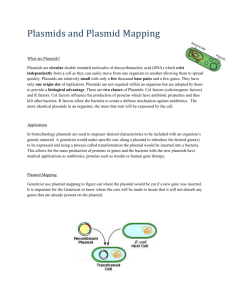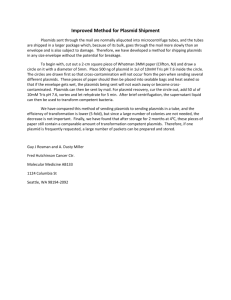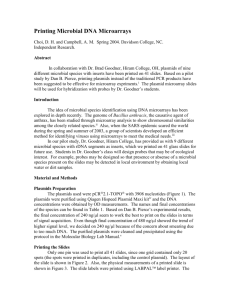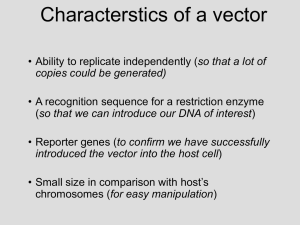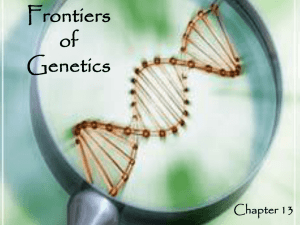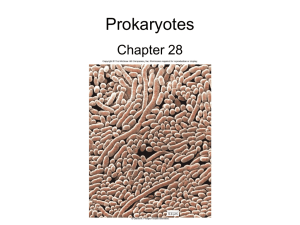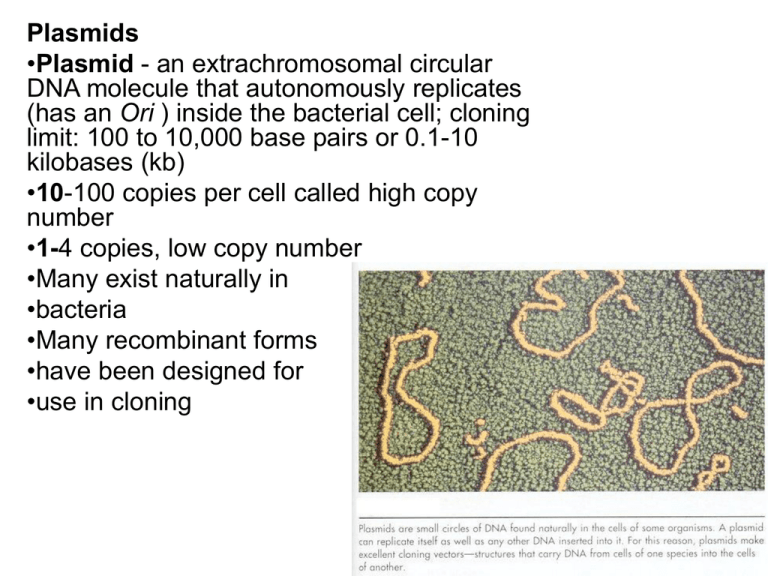
Plasmids
•Plasmid - an extrachromosomal circular
DNA molecule that autonomously replicates
(has an Ori ) inside the bacterial cell; cloning
limit: 100 to 10,000 base pairs or 0.1-10
kilobases (kb)
•10-100 copies per cell called high copy
number
•1-4 copies, low copy number
•Many exist naturally in
•bacteria
•Many recombinant forms
•have been designed for
•use in cloning
Different kinds of plasmids that exist in nature
F plasmids (fertility)
• Has genes for conjugation
• Carries Tra genes for transfer and formation of sex pili
R plasmids
• code for enzymes that result in inactivated antibiotics
• can be many resistances on one plasmid
• conjugative and permiscuous (spreads readily)
Sym plasmids
• Rhizobia nodulate legumes
• Fix nitrogen
• Genes for nodulation and fixation on the sym plasmid
Col plasmids
• Bacterial proteins that destroy closely related proteins
Metabolic plasmids
• carry genes to degrade specific substances like toluene, pesticides
Virulence plasmids
• Code for specific toxins and capsular proteins
Recombinant plasmids
• These have been designed to carry foreign DNA inserted into them
into a cell.
• They are a type of Cloning vector e.g.
1. pBR322
• derived from 3 others
• pSC101
• pSF2124
• pMB1
• familiy of similar vectors
• over 20 unique restriction sites
• 12 of sites are in Amp R and TetR genes and their promoters
• cloning into these sites makes selection of recombinants easier as it
results in insertional inactivation of resistance genes
• normal copy number is 15/cell
• pBR324 and pBR 325 are plasmids derived from 322 but have
insertional inactivation of different selectable markers.
2. pUC family of vectors
• has a Lac Z gene that continues to produce beta galactosidase unless
a foreign gene is inserted.
Copy numbers
• Generally want high copy numbers, exception is where high level of
expression of protein has a lethal affect on host, then want low copy
number.
• pBR322 derivatives generally low copy number
• Allows ‘lethal protein’ to be expressed below lethal concentration
– Can increase copy number by
– cultivating bacteria with plasmid under conditions such that protein
synthesis is arrested e.g. use chloramphenicaol
– some plasmids have a temperature sensitive mutation that leads to
uncontrolled replication at high temps
– ROP gene is involved in replication control if you remove that replication
goes nuts
What are the ideal features of a cloning vector such as a plasmid?
• replicates in host cell
• unique restriction endonuclease cloning sites
• at least one selection system
• ds DNA
• low molecular weight so room for big insert and not energetically
costly to cell
Steps in cloning a piece of DNA
• obtain fragment
• obtain plasmid
• construct plasmid with insert
• transform host cell with recombinant plasmid
• screen for successful cells with recombinant
plasmid with inserted foreign DNA
Making a Recombinant plasmid
1. Sticky ends
2. poly tailing technique
• allows any 2 DNA molecules to be joined by
adding poly A to the 3’ ends of one piece and
poly T to the 3 ‘ends of the other piece
3. Blunt end ligation
• relies on ability of T4 ligase to join blunt ended
molecules
• advantage is no additional material introduced
• not v. efficient
• difficult to control which blunt ends are ligated
4. Chemicallly synthesized linkers can be made.
Disadvantage is still have to blunt end to stick
them on, advantage is can insert a Restriction
site and can recover insert easily.
Transformation
• This is getting the DNA into the bacterial cell
• Some bacteria are naturally competent and this is how
DNA can move around in nature.
e.g. Streptococcus pneumonia (gm +ve)
– cells secrete competence factor(CF) in exponential phase
– this binds and stimulates the synthesis of 8-12 new proteins
– one is autolysin which exposes DNA binding protein and
nuclease on cell surface
– DNA binds in a ds form , any DNA can bind
– Nuclease hydrolyses one stand
– Other strand associates with proteins and crosses the
cytoplasmic membrane
– May integrate into genome, a transformant is a cell with an
altered genetic make up as a consequence of taking up external
foreign DNA
– If not integrated or not circular DNA will be degraded
• e.g. Haemophilis influenzae (gm –ve)
– no competence factors
– ds DNA enters cell as ds form
– only DNA from close relatives can bind
– DNA must contain specific 11bp sequence for
binding
– 600 copies in H influenza



